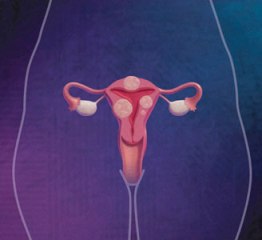 Hi Lady! Do you have any gynecological problem? Then here’s something for you to clarify urgently.
Hi Lady! Do you have any gynecological problem? Then here’s something for you to clarify urgently.
Uterine cancer! Yes, this is the most common gynecologic cancer (i.e., cancer that originates in female reproductive system).
It develops in the body of the uterus, or womb, which is a hollow organ located in the lower abdomen.
The wall of the uterus is comprised of an inner lining (called the endometrium) and an outer layer of muscle tissue (called the myometrium).
Dreadful! As you all know cancer is a disease in which certain body cells don’t function right, divide very fast, and produce too much tissue that forms a tumor.
Uterine cancer is cancer in the womb. This is the hollow, pear-shaped organ. During a woman’s pregnancy a baby grows here. Where the Motherhood begins from!
You must know about two different types of uterine cancers. Two types are endometrial cancer and uterine sarcomas.
Endometrial cancer is a common cancer of the female reproductive system in the United States. This type of cancer happens when cancer begins in the tissue lining the uterus (endometrium).
When cancer grows in the muscles or other supporting tissues in the uterus, uterine sarcomas occur. Uterine sarcomas account for only a small portion of uterine cancer.
Cause Unknown!! The cause of uterine cancer is unknown. A condition that increases the risk for uterine cancer is the endometrial hyperplasia.
Chronic exposure to estrogen (i.e., a female hormone produced by the ovaries) increases the risk for developing the disease and estrogen often affects tumor growth.
What increases estrogen exposure? Let’s see.
- Early menarche, a condition were menstruation begins before age 12
- Late menopause (after age 52)
- Presence of an estrogen-secreting tumor (e.g., some types of breast cancer)
- Nulliparity (having never given birth) or low parity
- Hormone replacement therapy (HRT) with exogenous estrogen (i.e., without progesterone)
Be Cautious! Vaginal bleeding after menopause, unusual vaginal bleeding or discharge, difficult or painful urination, painful sexual intercourse, pelvic pain are the common symptoms of uterine cancer.
Weight loss, anorexia, and change in bowel or bladder habits are signs of advanced disease all cases of uterine cancer.
Statistics!! In the United States approximately 40,880 women were predicted to develop this form of malignancy in 2005. The incidence of uterine cancer has remained fairly constant after doubling in the early 1970s. In 2005 about 7,310 deaths were predicted due to this disease.
Uterine sarcomas, regardless of the histologic subtype, are more common in black women. In women aged 30-50 years LMS tends to occur more often, as compared to carcinosarcomas and EES, which have much higher incidence in women older than 50 years.
Incidence!! The uterine cancer incidence increases after menopause and approximately 75% of cases are diagnosed in postmenopausal patients. The average age at diagnosis is about 60 years.
Endometrial cancer is more common in Caucasian women in the United States and uterine sarcoma is more common in African American women.
So don’t ever neglect any gynecology problem, sincere advice is bringing any such problem to the notice of the gynecologist without any hesitation or discomfort to avoid any further complications. Don’t shy! Keep in mind that early detection of any disease helps to treat it better.








